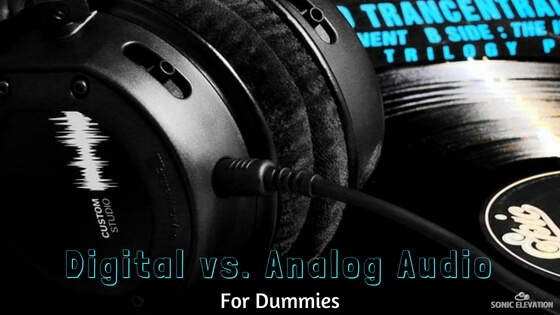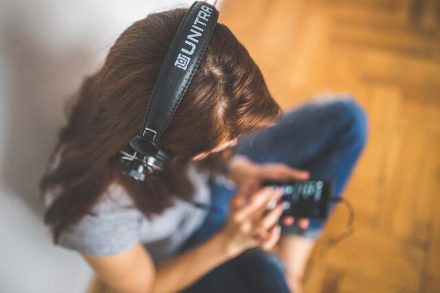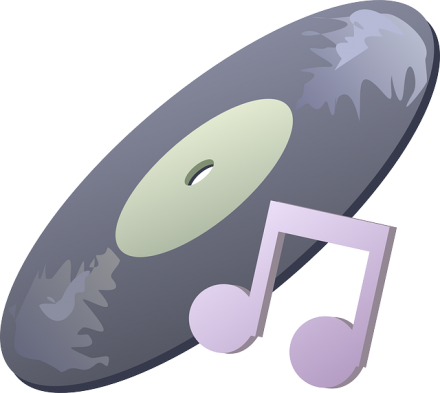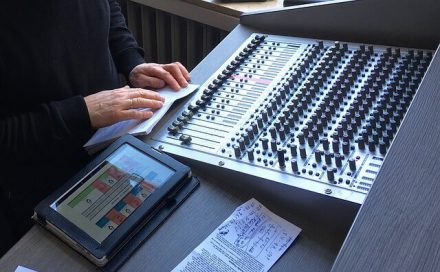
Digital vs Analog Audio For Dummies
Sound waves recorded and stored for our listening pleasure can pretty much be broken down into 2 main categories. The reason you’re here is that you want to learn more about these important aspects of sound – how it’s recorded, how it’s stored, and ultimately, how it will sound.
All 3 of these factors play an extremely important role in the final product and how we consume it. If you don’t have very much background information to go off as of now, don’t worry (you will soon).
We’ll do our best to explain the differences (and similarities) between these 2 types of audio in a way that’s easy to understand. We hope you enjoy our instructional take on digital vs. analog audio for dummies!
Digital vs Analog Audio
Rather than attempting to explain the very specific and extremely intricate processes happening within the various components that make up all the different recording equipment – we’ll give you the detailed basics you absolutely need to know.
We’ll provide some background information as well as a detailed description of each type of sonic storage file. At the end of each section, we also listed the main drawbacks and benefits for both.
By the end of reading this, your understanding will be broadened and you’ll be one step closer to becoming an expert in the music you consume and how it works. Let’s start with the digital aspect.

Digital Recording Methods & File Storage
Digital audio is stored in the form of repeating numerical sequences. It can either be recorded as a digital signal or converted afterwards using an analog-to-digital converter (ADC for short).
Once this technology was introduced, it largely replaced formerly popular methods of music storage on vinyl records and/or cassette tapes.
Using this form of recording and storage allows for arguably greater preservation of sound quality as well as the ability to store more data in a smaller package.
The recording and reproduction process is also generally less expensive which also contributes to why it’s become the more convenient choice for record labels and independent producers.
These files are much easier to transfer, duplicate, and send back and forth – so it makes perfect sense that they’ve become the most popular form of data storage. (We all know how much easier it is to carry a phone or portable MP3 player than lugging around multiple crates filled with records.)

File Compression & Sound Quality
Although this form of recording and storage is extremely convenient, there are a few downsides. When you compress one of these files, the recording becomes more watered down, in a sense.
If you’ve ever compressed an image, you’ll notice that there is a loss in quality. The more times a file is compressed, the more the quality starts to deteriorate.
The same concept applies to sound. This is one of the main reasons why audiophiles prefer bigger files such as FLAC, WAV, AIFF, etc.
Since the file hasn’t been compressed, the idea is that everything in that file will better match the original recording, rather than a watered-down or otherwise distorted version.
This is also why people use a DAC (digital-to-analog converter) to make their music sound better. It performs the reverse process of an ADC (covered briefly above) and attempts to essentially re-convert the signal back into the original form that the sound waves existed when they were recorded. It basically makes the recording sound more lively and fully authentic.
Lower-fidelity recordings are usually stored in the form of MP3 files. (Whether or not you’ll be able to actually hear a significant difference does depend on the headphones/speakers you’re listening with, as well as whether or not you know what to listen for.)
Overall, some of the main benefits include:
- Takes us less file storage space (allowing you to keep thousands and thousands of songs in your pocket)
- Can be compressed fairly easily
- Can be easily copied, transferred, and shared
- Captures more detail and nuance during the recording process
- Ability to convert downloaded songs into higher resolution files
On the opposite end of the spectrum, here are a few minor drawbacks:
- Many bands/artists have taken a financial hit since they now sell dramatically fewer hard copies
- Easily reproduced by amateurs which leads to the pirating of music (and other forms of media)
- You can’t physically hold your music (unless you still buy CDs)
- It takes away from the routine and ritual of sitting down and fully digesting an album from start to finish
Now that we’ve covered the basics, let’s take a look at the original form used for recording and sound reproduction.
Analog Recording Methods & File Storage
Analog recording has been around longer than it’s the digital counterpart and is the main method used for storing audio on mediums like vinyl records and cassette tapes.
The recording process requires different equipment which also causes a significant alteration in sound quality. The alteration doesn’t necessarily mean that the data is altered in a negative way, although there is definitely an argument that can be made to back up that claim.
The file data recorded using this method is stored in the form of continuous playback (rather than a combination of repeating numbers). The grooves on vinyl records physically represent the various frequencies and other elements of a particular recording.
It’s kind of like a musical fingerprint, except multiple copies of the same album will share more similarities than your fingerprints will next to someone else’s prints. (The point is that no two records are exactly alike.)
Compact cassettes are another analog storage medium, instead made using the magnetic recording. The file data on cassettes is physically stored on the magnetic tape.

Recording Methods & How They Affect Sound Quality
Since this method of recording and storage tends to require more equipment (such as amplifiers, cables, and mixers) it’s also usually more expensive to produce.
Another aspect you should know about is something called ‘generation loss’. Generation loss is the term used to refer to an overall loss of quality during the recording process or after a file has been copied multiple times.
Aside from the usually expected surface noise, the equipment used to actually record and produce the album will also have an effect on the playback.
Since there is more equipment between the vocalist and/or musicians playing the instruments – the signals have to travel a farther distance through multiple channels which causes a slight disturbance in the recording.
The amplifiers, microphone, and cables connecting all of the equipment have electrical power running through them which can cause audible (although barely audible in some cases) interference.
If you’ve ever stood next to (or under) a telephone pole and heard an electrical buzzing noise, it’s a similar concept. If you haven’t had that exact experience, but you can picture that happening on a smaller scale, you understand the general idea.
Noise reduction technology was created to help minimize this effect and minor interference such as hissing sounds created when recording vinyl records or cassette tapes.
- Listed below are a few benefits for this file type:
- You arguably hear a non-filtered, more authentic representation of the artist’s work
- Playing a record forces you to pay more attention to the music and effort put into the creation
- Allows you to physically own/hold a piece of legitimate artwork
- You get to join a niche set of collectors within the music community
- Certain records/cassettes hold onto (and sometimes surpass) their original value
Here are some of the main drawbacks of this form of storage and recording:
- More expensive to produce (and reproduce)
- Takes up more storage space
- Generation loss often occurs
- Limited options for producing, sharing, and/or copying
This isn’t to say that you can’t experience high-quality audio reproduction in this form, but it will definitely sound noticeably different.
From one music fan to the next, personal taste varies (sometimes pretty widely) – which plays a pivotal role in the level of enjoyment you’ll experience. Now let’s take a closer look at the debate in sound quality
Which One Sounds Better? – Is It All Subjective?

There is some debate over which form of audio reproduction sounds better. Other than the most subjective listening test – some people prefer to objectively compare using ‘double-blind listening tests’.
A double-blind test (for this purpose) consists of one person (other than the listener) playing different types of files while the listener’s job is to carefully listen for any differences in sound quality.
Reasons To Perform a Double-Blind Listening Test
Not knowing which type of file is playing during the test is one of the major benefits of running a double-blind sound test.
If you sit down and compare them yourself – you’ll know when the MP3 is playing and when the higher-resolution file is playing. Doing that pretty much completely takes away from maintaining any level of objectivity since your initial bias will greatly affect your final opinion.
This is the preferred method for many people since it’s usually a pretty good way to see if you can actually hear a noticeable difference between WAV and MP3 files for example.
Sometimes it’s used to debunk claims about how much better a FLAC file actually sounds when blindly compared side-by-side with an AIFF or MP3.
Most people find it difficult to hear (or explain) significant differences in quality. Although we (more or less) share the same inner-ear design, many would argue that personal subjectivity trumps all else.
Some listeners even go as far as to make the argument that running a double-blind listening test proves that there isn’t any major noticeable difference in sound fidelity. If you’re curious to see whether or not you’ll be able to tell the difference, try it out and see what you think!
When You Need To Know The Difference & Why It Matters
When it comes to forming an opinion about why you prefer vinyl and/or cassette over CD and/or MP3, etc. the way you like to consume music usually ends up being the deciding factor.

If you don’t like purchasing or collecting music but enjoy using streaming services like Tidal or Spotify – it’s pretty obvious which one you prefer. You probably like the portability and convenience you get from being able to keep thousands of songs in your pocket, ready to play anytime you want.
If you like collecting music memorabilia, CDs, tapes, or vinyl – there’s still a place for that as well. Vinyl is the most popular way to collect analog recordings today and it doesn’t seem like they’re going away anytime soon (despite their unpopularity among the mainstream audience).
No matter which type of recording you prefer, both hold a place in music history and the progression of recording technology – and how we consume music. We all love listening to music (otherwise you wouldn’t be here) and without the first recording methods, we wouldn’t have the later ones.
As you’re now aware, the difference between digital vs analog audio boils down to the 3 main aspects we listed in the intro. Here they are one more time to help it sink in: how it’s recorded, how it’s stored, and ultimately, how it will sound.
Hopefully, it makes more sense now and you’re able to have a better grasp on the difference. If you’re still a little bit confused or need additional clarification, feel free to leave your question below.
If you have anything to add or just want to leave any other type of comment, you can also chime in below.
If you enjoyed reading this and want to learn more about related subjects, you’ll enjoy browsing our Audioengine D1 Review.
You might also enjoy taking a look at How To Clean Vinyl Records By Hand if you’re curious or already have a collection that’s gotten a little dusty. Thanks for stopping by, we look forward to hearing from you!
Sonic Elevation: Ride The Waves.
- Korg B2 vs Roland FP10 | Which One To Buy - May 13, 2021
- How Does Music Affect The Brain? – Let’s Find Out! - April 6, 2021
- Why Are My Headphones Crackling? – How To Fix It - April 3, 2021